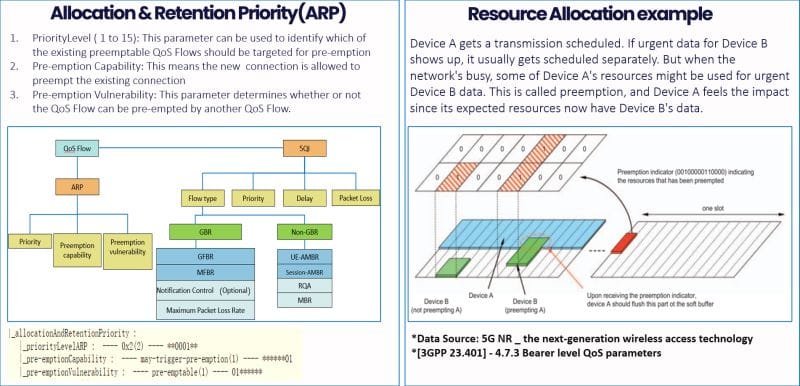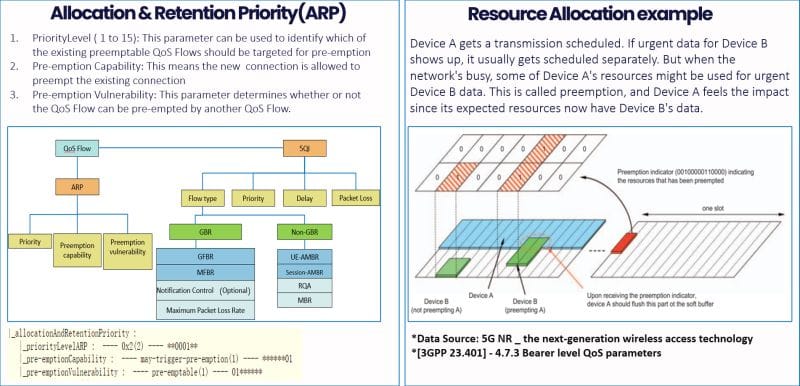4G&5G Allocation and Retention Priority (ARP): A Comprehensive Overview

What's 4G&5G Allocation and Retention Priority (ARP)?
- Allocation and Retention Priority (ARP) in both 4G and 5G refers to the priority level assigned to a user or device within the network.
- This priority determines how network resources are allocated and whether a connection is retained during high network congestion or other challenging conditions.
- Below is the main parameters for Allocation and Retention Priority (ARP):
- PriorityLevel (1 to 15): Identifies which preemptable QoS Flows should be targeted for pre-emption.
- Pre-emption Capability: Allows the new connection to preempt the existing connection.
- Pre-emption Vulnerability: Determines if the QoS Flow can be preempted by another.
How to check it from Traces ❓
- From the Initial Context Setup Request message sent by AMF/MME to BTS (Example given in the picture below).

What are the Use Cases ❓
- Quality of Service (QoS): ARP ensures different service quality levels for users, prioritizing high-priority users like emergency services.
- Emergency Situations: Prioritizes communication for essential services during network congestion.
- Network Optimization: Dynamically adjusts priority based on real-time conditions for efficient resource utilization.
- Mission-Critical Applications: Ensures critical services like autonomous vehicles get necessary resources for seamless operation.

Sources:
- The New Generation Wireless Access Technology Book
- 3GPP 23.401




